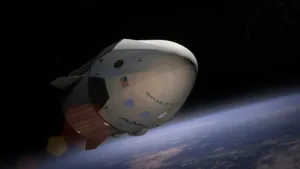In the vast expanse of the universe, where the stars twinkle like distant beacons and galaxies swirl in cosmic dances, humanity has long harbored a deep-seated curiosity about the mysteries of space. From the ancient civilizations who gazed up at the night sky in wonder to the modern-day scientists and astronauts who pushed the boundaries of exploration, our quest to unravel the secrets of the cosmos has been a journey of discovery and innovation.
Let’s embark on an exhilarating voyage through the realms of space exploration, exploring the wonders of the universe and the remarkable achievements of those who dare to reach for the stars.
The Dawn of Space Exploration: From Sputnik to the Moon Landing
The journey of space exploration began in earnest with the launch of the Soviet satellite Sputnik 1 in 1957, marking the dawn of the Space Age. This historic event not only heralded humanity’s first foray into space but also ignited a fierce space race between the United States and the Soviet Union. In the ensuing decades, landmark achievements such as Yuri Gagarin’s pioneering flight as the first human in space and Neil Armstrong’s iconic moonwalk during the Apollo 11 mission captured the world’s imagination and pushed the boundaries of what was thought possible.
The Golden Age of Space Exploration: Probing the Planets and Beyond
As technology advanced and our understanding of the cosmos deepened, space exploration entered a golden age of discovery. Robotic probes and orbiters ventured to distant worlds, unveiling their secrets and reshaping our understanding of the solar system.

From the rugged terrain of Mars explored by rovers like Spirit and Curiosity to the icy moons of Jupiter and Saturn visited by spacecraft like Galileo and Cassini, each mission has expanded our knowledge of the cosmos and inspired awe and wonder in the hearts of humanity.
The Human Element: Astronauts and Space Stations
While robotic missions have charted the course of space exploration, the human element remains central to our quest to explore the cosmos. Astronauts, with their courage and determination, have ventured beyond the confines of Earth, pushing the boundaries of human endurance and resilience. From the historic Apollo missions to the International Space Station, where astronauts live and work in orbit around the Earth, humanity’s presence in space serves as a testament to our collective spirit of exploration and discovery.
The Final Frontier: Toward the Stars and Beyond
As we stand on the precipice of a new era of space exploration, fueled by advances in technology and a renewed sense of ambition, humanity’s gaze turns toward the stars and beyond. Ambitious missions to return to the moon, establish a permanent presence on Mars, and even explore distant exoplanets offer tantalizing glimpses of what the future may hold. With each new discovery and breakthrough, we inch closer to unlocking the secrets of the cosmos and fulfilling our destiny as explorers of the universe.
READ ALSO
Tesla Models – Electric Vehicles
Black Holes – Not Space Vaccums
Nanotechnology – Atomic Scale
Conclusion: A Journey of Discovery and Wonder
In the grand tapestry of the cosmos, space exploration serves as a beacon of hope and inspiration, uniting humanity in our quest to unravel the mysteries of the universe. From the pioneering efforts of early spacefarers to the bold visionaries charting the course for future generations, our journey through the realms of space is a testament to the indomitable spirit of exploration that defines us as a species.

As we gaze up at the night sky, let us continue to dream of distant worlds and boldly go where no one has gone before.
Frequently asked questions
1. What is space exploration?
– It is the investigation and discovery of outer space beyond Earth’s atmosphere. It encompasses sending spacecraft, satellites, and humans into space to study celestial bodies such as planets, moons, stars, and galaxies.
2. Why is space exploration important?
– It is crucial for scientific research, technological advancement, and understanding the universe. It helps us learn more about our solar system. The origins of the universe, and the potential for life beyond Earth. Additionally, space exploration drives innovation in various fields, including medicine, communications, and materials science.
3. How do we explore space?
– It is conducted through various means, including robotic missions, crewed missions, and telescopic observations. Robotic spacecraft are sent to explore distant planets, moons, and asteroids. While crewed missions involve sending astronauts into space to conduct research and experiments aboard spacecraft or space stations. Telescopes both on Earth and in space are used to observe and study distant celestial objects.
4. What are some notable achievements in space exploration?
– There have been numerous significant achievements in space exploration. Including the Apollo moon landings, the launch of space probes like Voyager and Cassini to explore the outer planets. The Hubble Space Telescope’s groundbreaking observations, and the ongoing exploration of Mars by rovers such as Curiosity and Perseverance.
5. What are the challenges of space exploration?
– It presents several challenges, including the harsh conditions of space, the vast distances involved. The need for advanced technology and infrastructure, and the high costs associated with space missions. Additionally, human exploration, poses risks to astronauts’ health and safety, requiring extensive training and preparation. However, overcoming these challenges leads to valuable discoveries and advancements in our understanding of the universe.
References:
– NASA. (n.d.). NASA History. Retrieved from https://www.nasa.gov/humans-in-space/why-go-to-space/
– European Space Agency. (n.d.). Missions. Retrieved from https://www.esa.int/Science_Exploration/Space_Science/Missions

